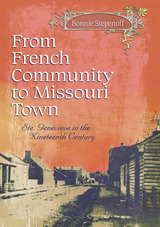
Medicine in the twenty-first century will be very different from the medicine of today; scientific, technological, economic, and ethical conditions of practice will be transformed. What do these changes portend for medical education? What knowledge should all medical students acquire? How can medical educators prepare students in the most cost-effective way?
This book describes efforts made at Harvard Medical School during the past to reorient general medical education. Harvard’s New Pathway has received national attention since its inception—including a multipart special on PBS’s Nova—because it offers a radical restructuring of the traditional medical school curriculum. Its creators, most of them contributors to this book, designed a program that gives students not only a core of scientific, biomedical, and clinical knowledge but also the skills, tools, and attitudes that will enable them to become lifelong learners, to cope with and use new information, and—most important—to provide better patient care.
New Pathways to Medical Education also tells the inside story of how a traditional and research-oriented faculty was persuaded to cooperate with colleagues outside their departments in adopting a student-centered, problem-based approach to learning. Central to this transformation was the Patient–Doctor course, which the book describes in detail. This course—which teaches students to LISC the patient–doctor relationship for the benefit of patients—is considered one of the most significant contributions to medical education in the New Pathway.
New Pathways to Medical Education will inspire physicians, medical scientists, and medical educators around the world to think and act more decisively to reform medical education. And because it documents the development of an innovative curriculum, this study will interest educators in all fields.

This second volume completes the story begun in Walter B. Cannon: The Life and Times of a Young Scientist (Belknap Press, 1987), tracing the middle and late years of one of America’s most distinguished medical scientists.
It resumes during World War II with Cannon’s battlefield work on traumatic shock in England and France, and follows him to Harvard Medical School as he investigated the workings of the sympathetic division of the autonomic nervous system, reaffirmed his emergency theory of the sympathico-adrenal system, and developed his now-famous concept of homeostasis and pioneer contributions to the newly emerging field of neuroendocrinology. This volume also recounts Cannon’s work with society on a broader scale, including defending the practice of animal experimentation, the rescue of European medical émigrés fleeing the Nazis and Fascists, and providing medical aid to the Spanish Loyalists and to China. Moreover, as a senior statesman of science, Cannon helped guide policies and programs that shaped the future of medical research, practice, and education.
READERS
Browse our collection.
PUBLISHERS
See BiblioVault's publisher services.
STUDENT SERVICES
Files for college accessibility offices.
UChicago Accessibility Resources
home | accessibility | search | about | contact us
BiblioVault ® 2001 - 2024
The University of Chicago Press









